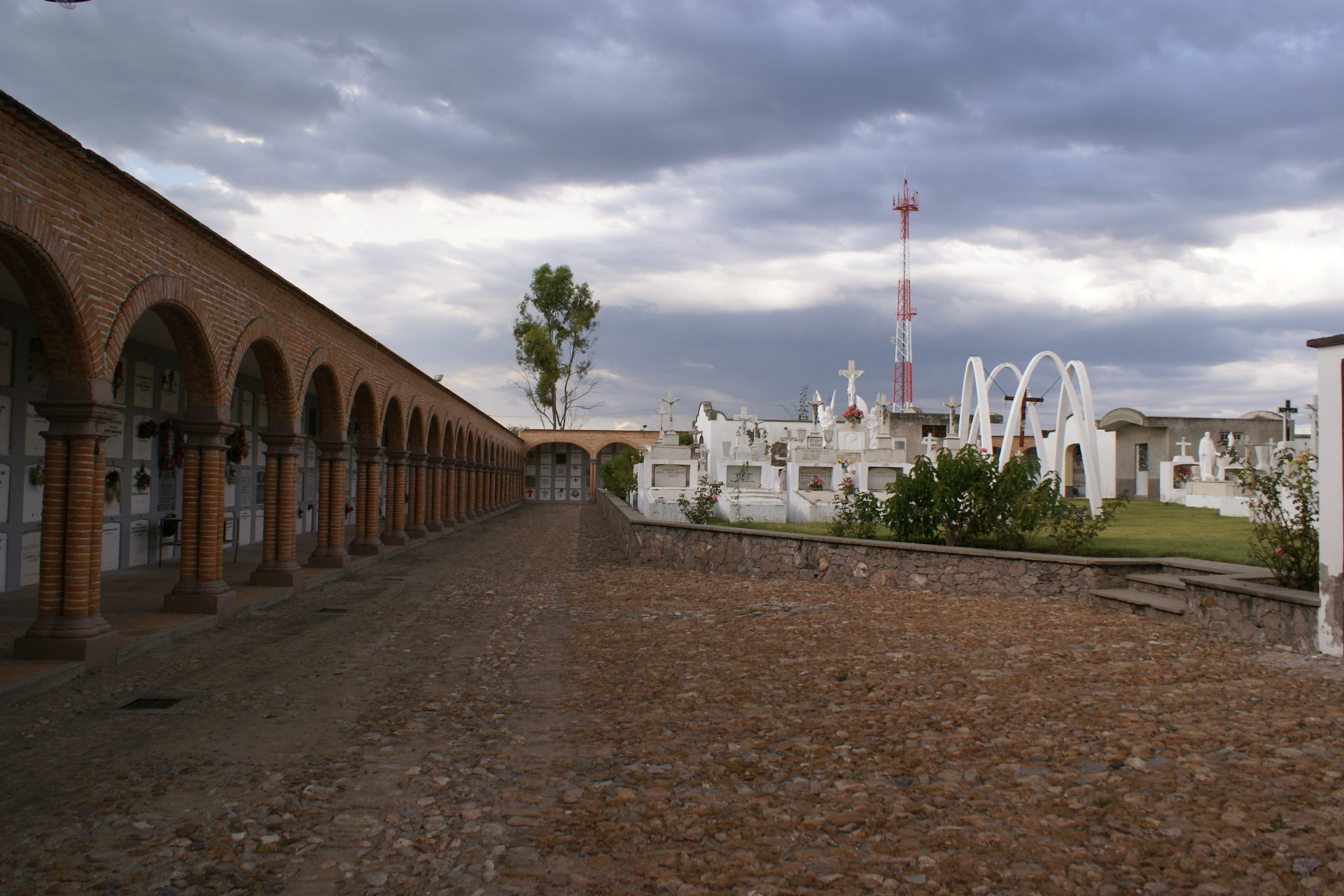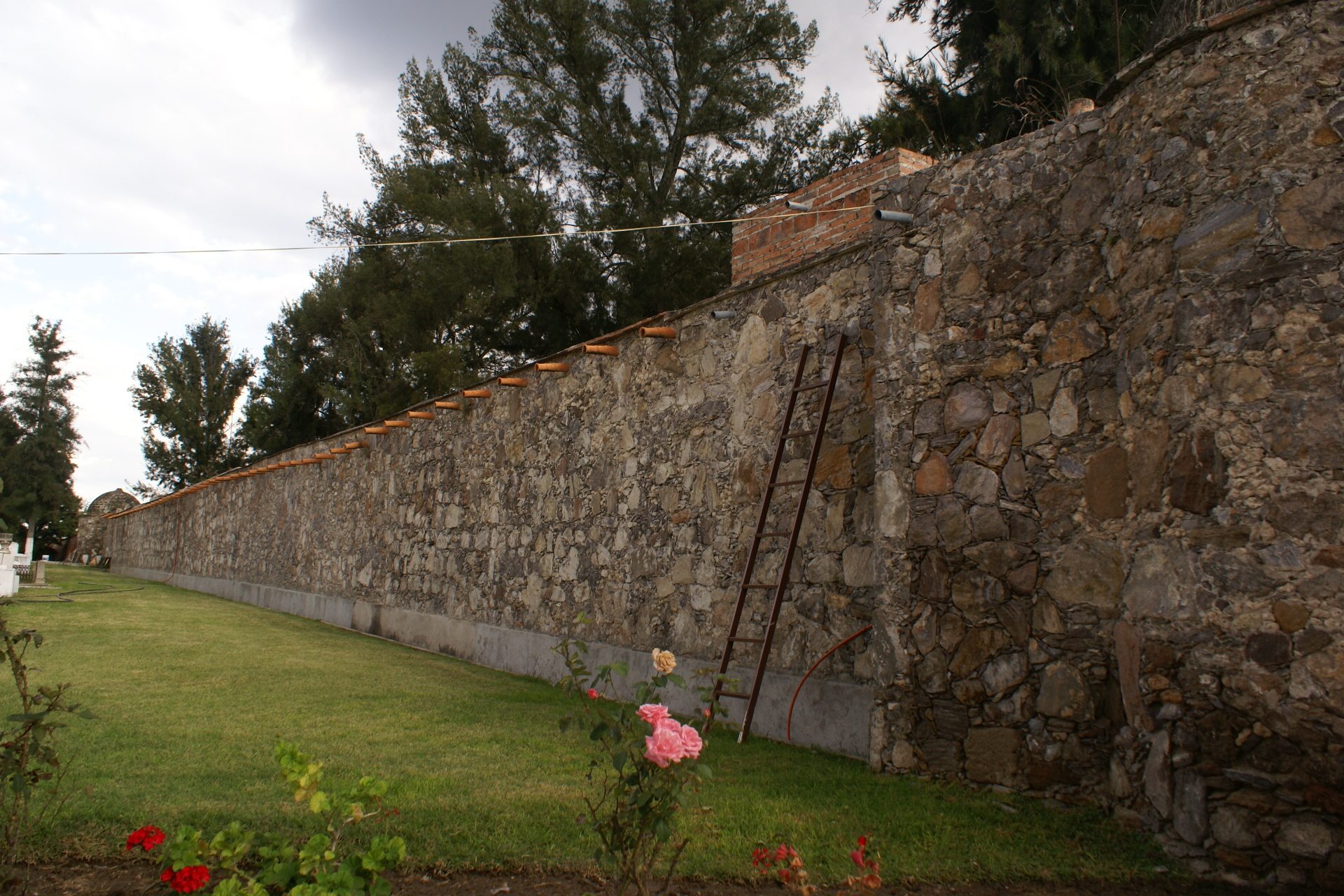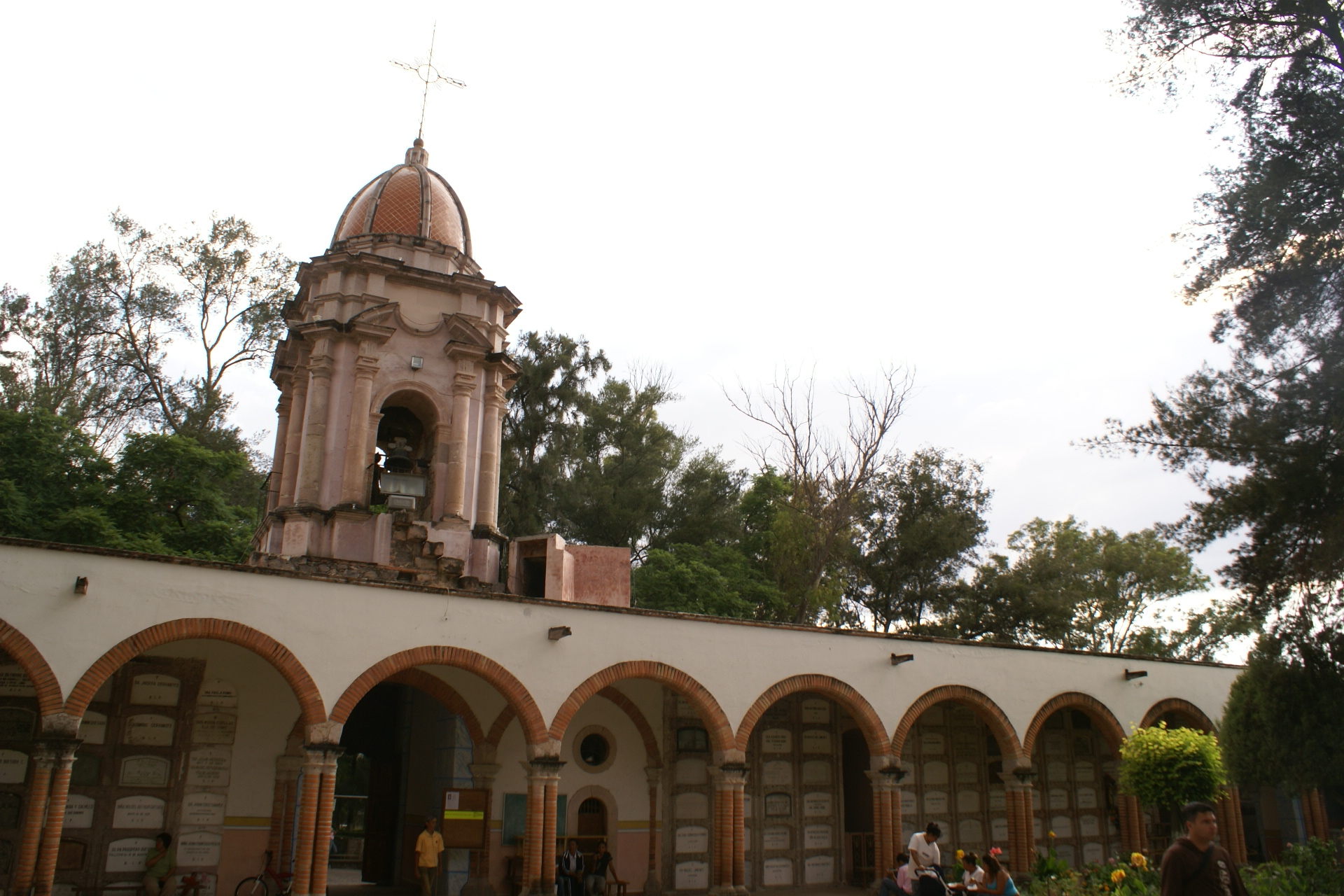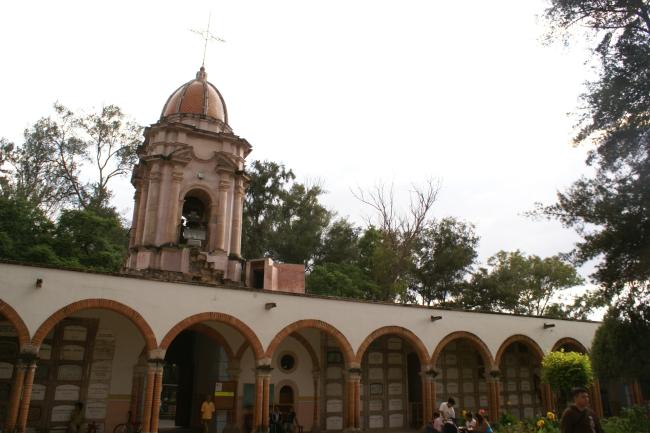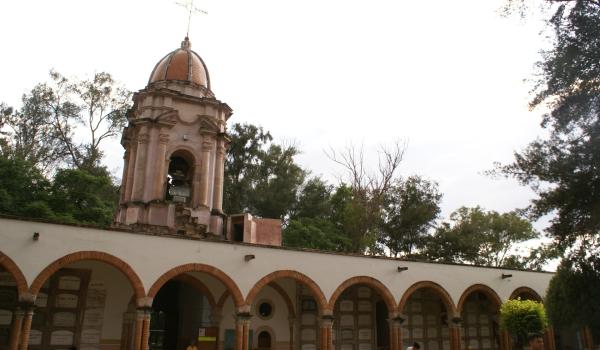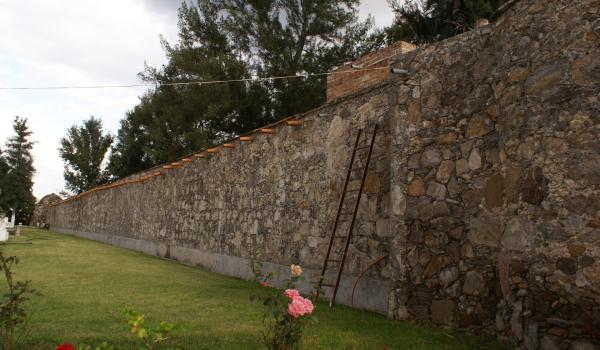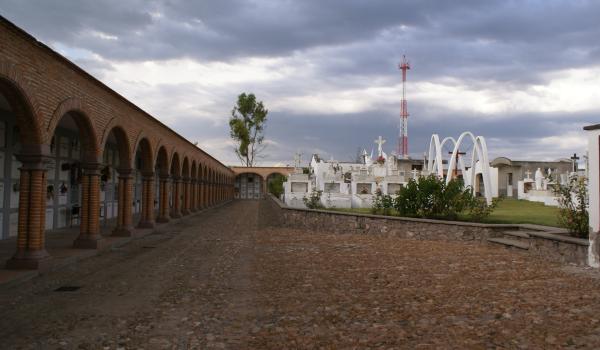Panteón en Encarnación de Díaz
Route element
Panteón en Encarnación de Díaz
The plains of the Teocaltiche Valley, an area of Chichimeca towns, were an important crossing point for communication routes between Zacatecas and Mexico City and Guadalajara. This facilitated the emergence of a successful agricultural and livestock economy. The Altos de Jalisco soon became, along with Aguascalientes, suppliers to the mining settlements in the north, leading to the founding in 1760 of the town of Nuestra Señora de la Encarnación de los Macías, at the former post of El Sauz.
By 1791, this town had 199 Spanish families, 7 mestizo families, and 19 mulatto families. The administration was managed by a secular council with an ordinary mayor and a procurador syndic, and its economy was based on agricultural production and pig farming, which were exported to mining areas, primarily Zacatecas.
A large part of the profits generated by agricultural activities in the town were invested by the inhabitants in the construction of a church, whose interior resembles the 19th-century churches of the region's haciendas. The church of Encarnación de Díaz has a sober façade, with notable three-tiered towers and domes. The ensemble is surrounded by an iron railing supported by rectangular quarry columns, with the finials holding lanterns.
The commercial importance of Encarnación de Díaz also allowed for the construction of a 19th-century cemetery that features neoclassical sculptural gems in its mausoleums. Inside a building with a central courtyard surrounded by arcades, there are embedded crypts that house the bodies of the community's inhabitants.

